
【現地レポート】江戸から続く伝統を礎に、自由な発想をもとに挑戦を続ける朝倉蒸溜所
- 造り手
- 蒸溜所(日本)

ジェームズ・ベイ・ディスティラーズは、アメリカン、カナディアン、スコッチといった3種類のウイスキーを筆頭に、多種多様なスピリッツを造っています。 スコットランド国外でスコッチウイスキーをブレンドする許可を得た米国唯一のクラフト蒸溜所として、同社のスピリッツは世界各国で楽しまれており、数々の賞も受賞しています。
今回Dear WHISKYは、ジェームズ・ベイ・ディスティラーズの創業者の1人であり、オーナーであるアーネスト・トロースさんにインタビューを行いました!
アメリカのワシントン州シアトル近郊でウイスキー造りを始めた経緯や、高い品質のウイスキー造りに懸ける想いなどを伺いました。ぜひ最後までご覧ください!
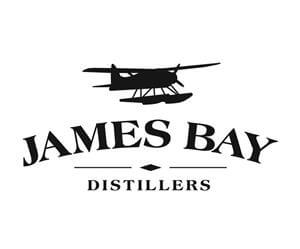
| 蒸溜所名 | ジェームズ・ベイ・ディスティラーズ |
| 創設年 | 2014 |
| 創設者 | アーネスト・トロース、リー・トロース |
| 住所 | 3101 111th Street SW, Ste B, Everett, WA 98204 |
| 公式サイト | 公式サイトはこちら! |
Dear WHISKY:
どのようなことがきっかけで蒸溜所を始めたのですか?
アーネストさん:
2013年に蒸溜所を始めたきっかけは、「Moonshiners(酒類密造者)」という、バージニア州やノースカロライナ州の山間部でコーンウイスキー造りに挑戦する様子を追ったテレビ番組でした。その番組を見て私たちはお酒造りに興味を持ちました。
Dear WHISKY:
蒸溜所を設立するためにまず何をしましたか?
アーネストさん:
まず、色々な蒸溜所に行ってアルバイトをしました。
その時点では蒸溜所を始めるための許可は得ていませんでしたが、お酒造りはとても興味深く、アルバイトの経験が私たちの蒸溜所設立への自信にもつながりました。2014年に許可を得て、会社を設立しました。
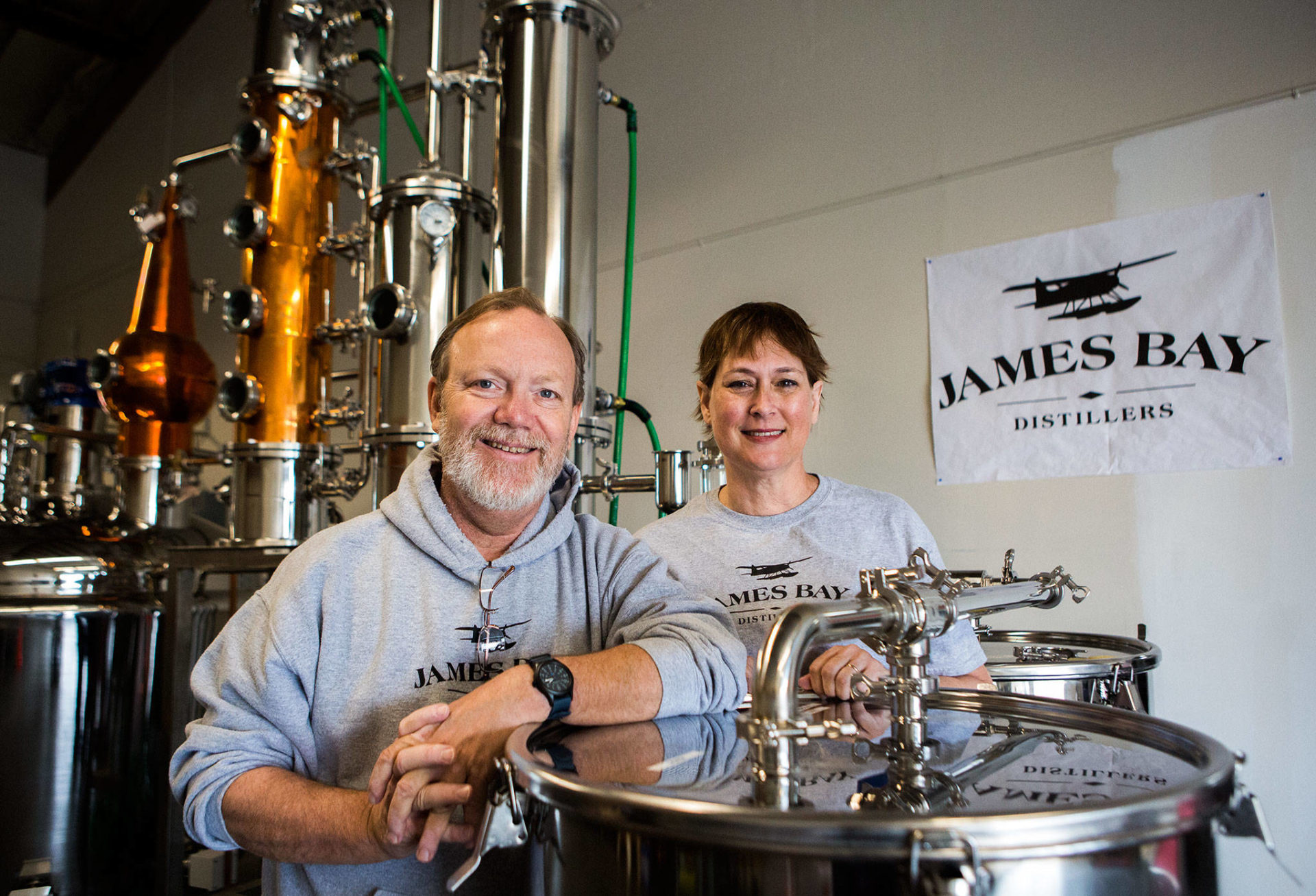
ジェームズ・ベイ・ディスティラーズを設立したトロース夫妻
Dear WHISKY:
蒸溜所はどこで始められたのですか?
アーネストさん:
蒸溜所設立について考え始めたのはアメリカでしたが、実際にはカナダのアルバータ州で蒸溜所を始めました。2017年にはカナダのブリティッシュコロンビア州に移りました。
Dear WHISKY:
なぜブリティッシュコロンビア州に移られたのですか?
アーネストさん:
ブリティッシュコロンビア州を選んだのは、食品と飲料の観点で、カナダは米国に比べて5~8年遅れているという調査結果が出ていたからです。私たちのようなクラフト蒸溜所にとってブリティッシュコロンビア州には多くのチャンスがあると考えました。
Dear WHISKY:
ブリティッシュコロンビア州での蒸溜所の運営はいかがでしたか?
アーネストさん:
ブリティッシュコロンビア州には、私たちが評価した通り多くのチャンスがありました。しかし、私たちが成し遂げたいことに対して市場が追いついてきていないと感じました。
そこで私たちは方向転換し、2018年にアメリカに戻り、ワシントン州のエベレットに現在の蒸溜所を設立しました。
Dear WHISKY:
なぜワシントン州を選ばれたのですか?
アーネストさん:
蒸溜所を始めようと考えたとき、私たちはアメリカ東海岸のバージニア州に住んでいました。しかし、東海岸以外の場所でも様々なフレーバーやスピリッツを生み出すチャンスがあると考えました。その結果、私たちはシアトルに移り住むことを決意しました。
Dear WHISKY:
東海岸ではどのようにウイスキーをつくっているのですか?
アーネストさん:
東海岸でウイスキー造りに携わっている人たちは皆、同じようなアイデアとマーケティングストーリーを持っていると思います。禁酒法時代に祖父から受け継いだレシピでバーボンウイスキーを造りたいと考えている人が多い印象です。
Dear WHISKY:
シアトルはどのようなコミュニティーですか?
アーネストさん:
シアトルは国際色豊かなコミュニティーであり、食べ物やお酒に関する新しいアイデアに対してとてもオープンです。
多くの人が蒸溜所に行ってウイスキーについて学ぶことを楽しんでくれているように感じます。
また、ウイスキーを飲んだことがない方も、ウイスキーについての知識や魅力を感じてもらえれば、楽しそうにテイスティングをしている様子をよく見ます。
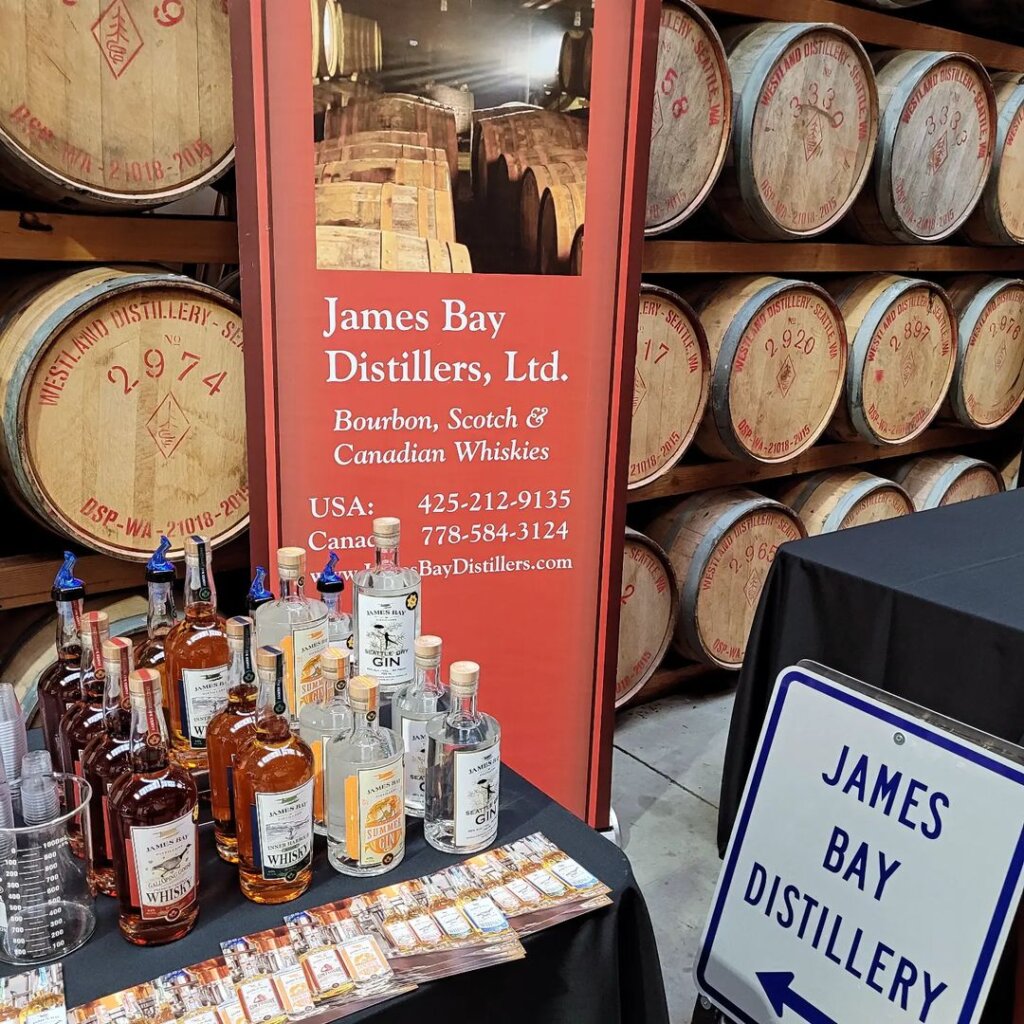
ジェームズ・ベイ・ディスティラーズの商品
Dear WHISKY:
蒸溜所を立ち上げる前は、どのようなお仕事をされていましたか?
アーネストさん:
ワシントン州に引っ越す前は、妻はコンピューター・プログラマー兼エンジニアで、私は中東で外交官として働いていました。
Dear WHISKY:
様々な経験をお持ちですが、なぜアルコール業界を選ばれたのでしょうか?
アーネストさん:
農業など他の産業も検討しましたが、蒸溜所の立ち上げが最も面白いアイデアだと思いました。
Dear WHISKY:
蒸溜所では何人の方が働いているのですか?
アーネストさん:
私たち2人とアルバイトの方を含めて5人です。
Dear WHISKY:
毎日どんな仕事をしていますか?
アーネストさん:
マーケティングから生産、販売まで何でもやります。電球の取り付けから新しいスピリッツのレシピの考案まで、あらゆることに取り組んでいます。
Dear WHISKY:
仕事のどのようなところに面白さを感じますか?
アーネストさん:
ウイスキー造りに関わるルーティンワークはもちろん、マーケティングのミーティングや接客対応など、蒸溜所のオーナーとして、毎日様々な仕事をおこなっています。
全く同じ日など1日もないこの仕事が私は好きです。
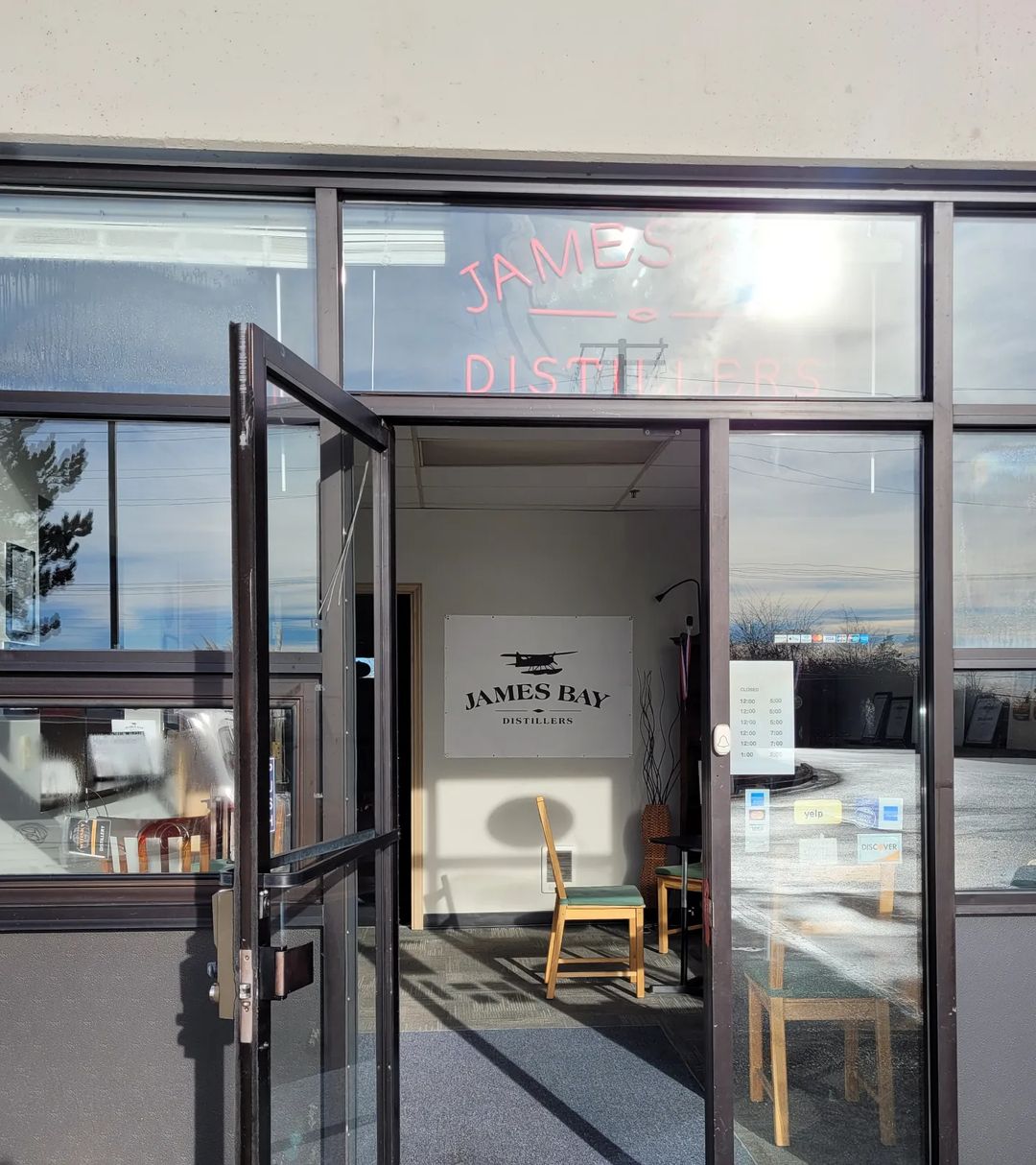
ジェームズ・ベイ・ディスティラーズのビジターセンター
Dear WHISKY:
ジェームズ・ベイ・ディスティラーズはどのような場所に建っていますか?
アーネストさん:
シアトルから北に20マイルほど行ったところにある国際空港であるペイン・フィールド空港の敷地内にあります。蒸溜所は2つの滑走路の間の敷地に建てられていて、空港から離着陸するすべての飛行機を見ることができきます。毎日が航空ショーだとよく冗談を言っています。
Dear WHISKY:
なぜ空港のすぐそばに建てたのですか?
アーネストさん:
この場所を選んだ理由は、施設とアクセスです。駐車場もたくさんあり、床も平らで、必要な防火設備もすべて整っていました。設備も完璧で、設立資金を節約することができました。
また、配送においても非常に便利です。
たとえば東京のお客様から午前中に注文があれば、同じ日の午後にはペイン・フィールド空港かシアトル・タコマ空港から配送することができます。

空港に隣接するジェームズ・ベイ・ディスティラーズ
Dear WHISKY:
会社名とロゴの由来を教えてください!
アーネストさん:
「ジェームズ・ベイ」は、ブリティッシュ・コロンビア州ビクトリアの主要な港の名前に由来しています。ジェームズ・ベイとビクトリアは、夏の間、ロゴにも描かれている水上機のターミナルとして有名です。カナダには飛行機でしか行けない場所があるため、約7分おきに発着すると言われるほど多くの水上機がジェームズ・ベイから飛び立ちます。
Dear WHISKY:
なぜジェームズ・ベイのロゴに水上機を選んだのですか?
アーネストさん:
水上機が与えてくれるロマンと冒険のアイデアが気に入ったからです。
小さな飛行機なので、操縦士と話しながら飛ぶことができますし、ワクワク感や冒険しているような気分を味わうことができます。

ジェームズ・ベイ・ディスティラーズのロゴ
Dear WHISKY:
ジェームズ・ベイ・ディスティラーズの特徴を教えてください!
アーネストさん:
私たちは様々な国のお酒を造っています。
バーボンウイスキー、スコッチウイスキー、6種類のジン、3種類のウォッカ、そしてイタリアの蒸留酒であるフィノッキエットなど、全部で14種類の製品を製造しています。

左からジン、ウォッカ、フィノッキエット、カナディアンウイスキー
Dear WHISKY:
なぜ多くの種類のお酒を製造しようと思ったのですか?
アーネストさん:
様々な種類のお酒を高い品質で造ることができることを示したかったからです。シェフである友人や、ヨーロッパ、中東、アジアを旅したことがきっかけとなり、様々な国のお酒造りに挑戦しました。
Dear WHISKY:
お酒の種類はたくさんありますが、どのように開発に踏み出す商品を選んでいますか?
アーネストさん:
新作について提案してくれる家族からの影響は大きいです。私たちはスピリッツのサンプルを家族に送り、感想を聞いて、商品開発の参考にしています。
Dear WHISKY:
最初はどのスピリッツを作られたのですか?
アーネストさん:
まずは、トウモロコシを100%使用したバーボンウイスキーから始めました。
Dear WHISKY:
なぜトウモロコシ100%のウイスキーを選んだのですか?
アーネストさん:
私たちは、ウイスキー好きとワイン好きの人の好みが似ていると考えています。ワイン好きの人は人前ではよく辛口のワインが好きだと話しても、家では少し甘めのものを飲むことがあります。このことから、とうもろこし由来の自然な甘みがあるコーン・ウイスキーを最初に造るお酒に選びました。
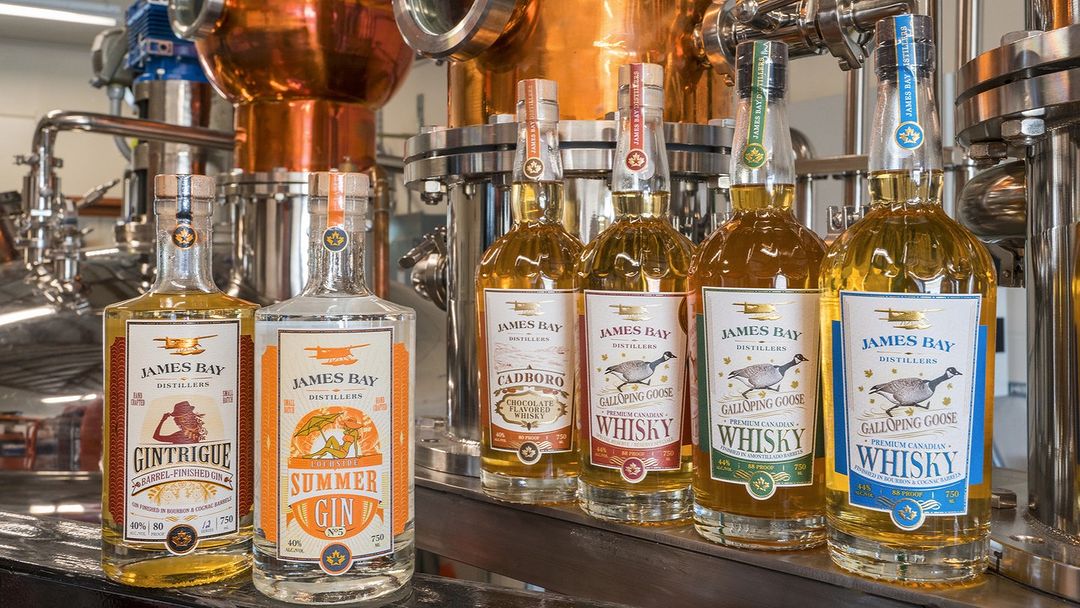
豊富なウイスキーのラインナップ
Dear WHISKY:
ウイスキー造りのための水はどこから調達しているのですか?
アーネストさん:
糖化工程(マッシング)では、カスケード山脈から湧き出る水を使用しています。不純物が除去された純水を使うことで、スピリッツの味わいに影響が出ないようにしています。
Dear WHISKY:
年間生産量はどのくらいですか?
アーネストさん:
2基の蒸留器で、年間5000ガロン(19000リットル)程度を生産しています。蒸留器の1つは230ガロン、もうひとつは20ガロンと小さいサイズです。
小さいサイズの方が、失敗を恐れずに新たなアイデアを実験することができると考え、このようなサイズになっています。

ジェームズ・ベイ・ディスティラーズの蒸留器
Dear WHISKY:
どのようなウイスキーを目指していますか?
アーネストさん:
”sipping spirit(シッピング・スピリッツ)”として楽しめるウイスキーです。
Dear WHISKY:
”sipping spirit”とは何ですか?
アーネストさん:
一般的には、ミキサー(割り材)なしで楽しめるウイスキーを指す概念です。アメリカには4,700のクラフト蒸溜所があり、その多くがきちんとした品質のスピリッツを造っていますが、フレーバーが正確でなかったり、風味が十分でなかったりするため、ソーダやトニックウォーター、ジンジャーエールなどのミキサーを加える必要があることがあります。
そのため私たちの目標は、ウイスキーそのものでお客様を感動させられる商品を造ることです。
Dear WHISKY:
なぜそのようなウイスキー造りを目指されたのですか?
アーネストさん:
初めてウイスキーを購入するときは、ラベルに惹かれて買うこともあると思います。しかし、何度も同じボトルを購入するのは、そのスピリッツの品質がお客様の期待に応えられたときだけです。
そのため、私たちがつくるものはすべて ”sipping spirit” であることを目指しています。

”sipping spirit” の追求
Dear WHISKY:
なぜアメリカでスコッチウイスキーのブレンドを始めたのですか?
アーネストさん:
バーボンウイスキーではなくスコッチウイスキーを飲みたい人にもジェームズ・ベイ・ディスティラーズを訪れてほしいと思ったのがきっかけです。
Dear WHISKY:
スコッチウイスキーのブレンドを始めるにあたって、何か難しかったことはありますか?
アーネストさん:
まずイギリスの歳入税関(HMRC)から許可を得なければなりませんでした。しかし、それは意外にもとても簡単で、申請は半年ほどで通りました。
特に大きな障壁もなく、楽しみながらプロジェクトを進めることができました。
Dear WHISKY:
アメリカでスコッチウイスキーを造るという経験はどのようなものですか?
アーネストさん:
スコットランドの造り手の方にアイデアを求めれば快く提案してくれるので、とても楽しい経験となりました。
「スコッチウイスキー」は厳しいルールで守られていますが、許可を得てルールさえ守れば、魅力的なウイスキー造りを行うことができます。
Dear WHISKY:
国外でスコッチウイスキーをブレンドする際のルールについて教えてください!
アーネストさん:
スコッチウイスキーのブレンドはできますが、バーボンウイスキーとのブレンドや国外での熟成はできません。そのため、スコットランドから送られてくるウイスキーは樽ではない容器に入っています。
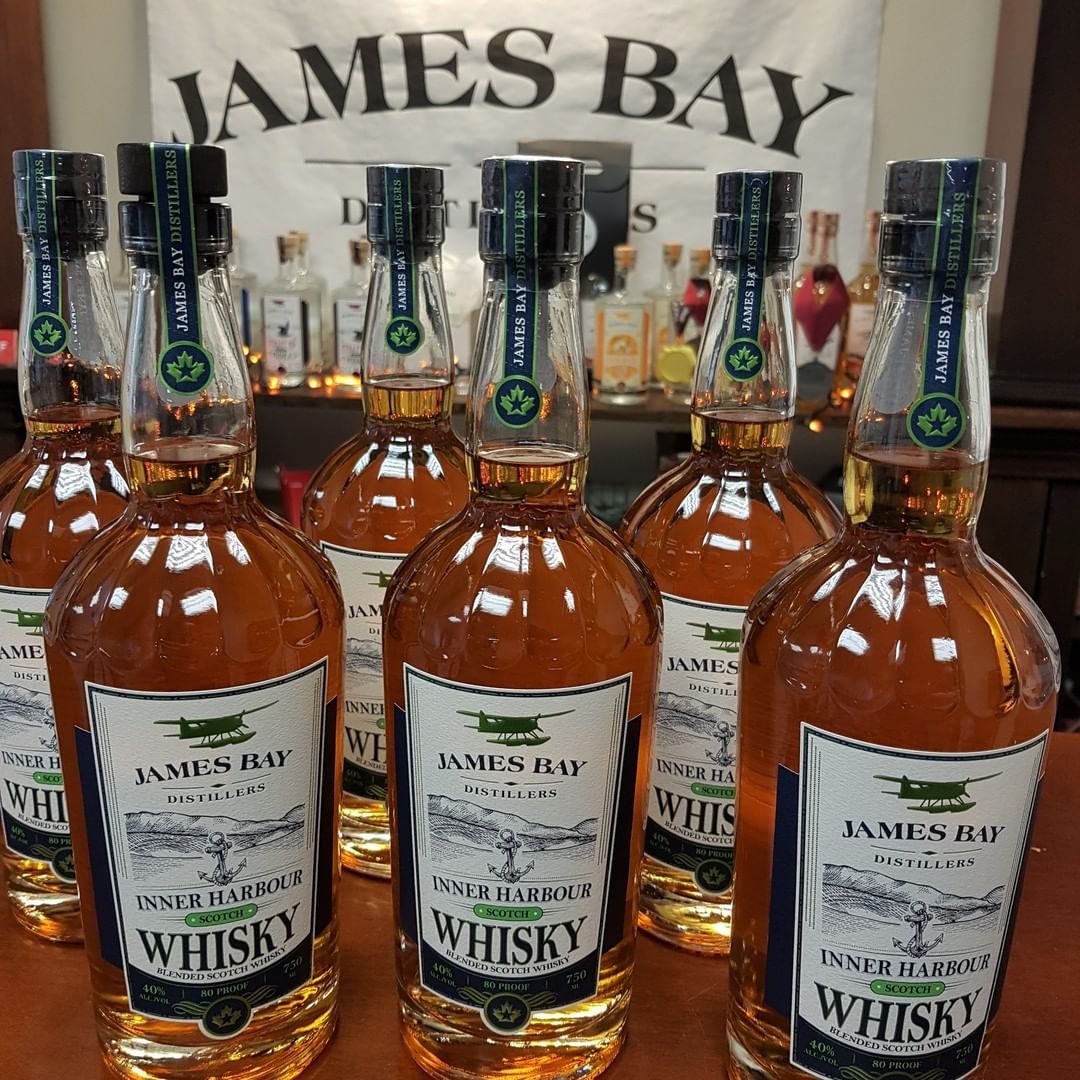
ブレンデッドスコッチウイスキー「Inner Harbour Whisky」
Dear WHISKY:
どのようなスコッチウイスキーを目指したのですか?
アーネストさん:
毎日楽しんでもらえるようなウイスキーを作りたかったので、高品質でありながら低価格な商品を目指しました。
Dear WHISKY:
ジェームズ・ベイ・ディスティラーズのスコッチウイスキーの特徴はどのようなものですか?
アーネストさん:
私たちのスコッチは40%がモルトウイスキー、60%がグレーンウイスキーです。そのため、トウモロコシの甘味とバニラとキャラメルの香りを楽しむことができます。
Dear WHISKY:
スコッチウイスキーに対する反響はいかがですか?
アーネストさん:
東京ウイスキー&スピリッツ コンペティション 2022に3年熟成のInner Harbour Whiskyを出品したところ、18年熟成のジョニーウォーカー、18年熟成のバルヴェニー、25年熟成のクレイグ アイル、その他多くの12年から15年熟成のウイスキーと同等の成績を収めることができました!
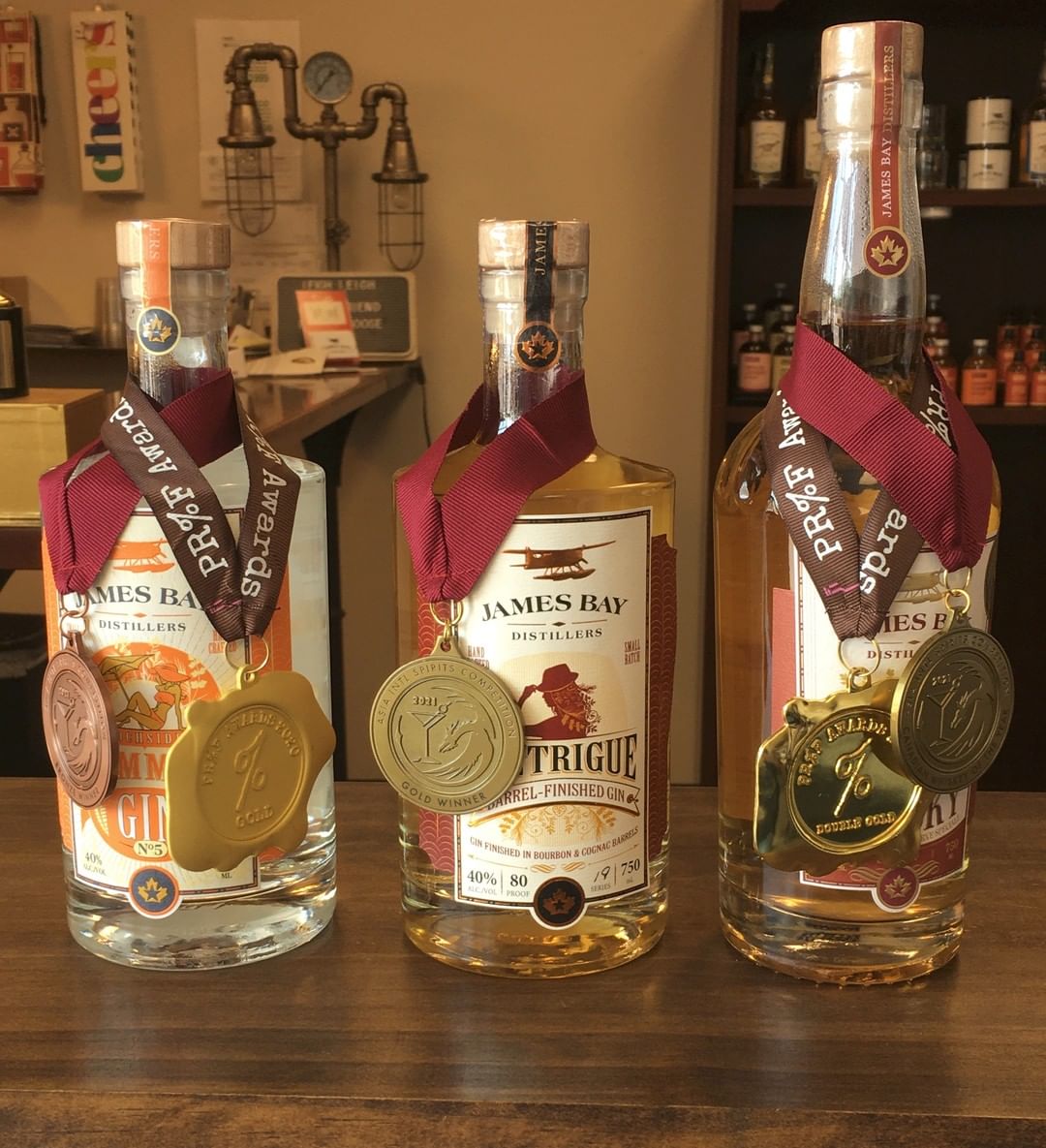
数々の賞を受賞しているジェームズ・ベイ・ディスティラーズの商品
Dear WHISKY:
今はアメリカ国内市場と海外だと、どちらにより力を入れていますか?
アーネストさん:
国内市場と海外市場の両方に目を向けています。
Dear WHISKY:
なぜ海外市場にも力を入れているのですか?
アーネストさん:
アメリカ国外に住み、働いた経験から、世界の市場の95%はアメリカの外にあると実感しました。そのため、国内市場だけに限定しないことの重要性を理解しています。そこで私たちは、ワシントン州政府の地元当局と協力し、特に中国、日本、韓国、シンガポールなどのアジア諸国で販路の開拓に取り組んでいます。
Dear WHISKY:
国際的に製品を販売することの強みは何だと思いますか?
アーネストさん:
より多くのフィードバックを得ることができるので、自信を持って世界の他の地域に発売していくことができます。また、世界各国からの意見を取り入れられることで、地元にしか販路を持たない蒸溜所よりも、蒸溜所として良い基盤ができると思います。
Dear WHISKY:
非英語圏で販売する際には、どのように言葉の壁を乗り越えていますか?
アーネストさん:
必ずその国のネイティブスピーカーの方に販売資料を翻訳してもらっています。
そうすることで、商品の魅力を正しく伝えることができ、お客様と私たちの間に混乱が生じないようにすることができます。
Dear WHISKY:
なぜそのような工夫をしているのですか?
アーネストさん:
私たちは何よりもお客様の利益を優先しています。お客様の言語で営業できる人がチームに1人いることで、お客様が私たちの製品を理解しやすくなるだけでなく、お客様からの評価を聞くことができます。そうすることで、その地域の人たちが本当に求めている商品を造ることができるのです。
Dear WHISKY:
どのようなお客様がターゲットですか?
アーネストさん:
私たちはHENRYs(high earners, not rich yetの略称)というカテゴリーにフォーカスしています。彼らは一般的に、新しい経験、香り、味わいを求め、友人や家族と分かち合うことを好みます。多くの国々でこのようなお客様にアピールしていくことを目指しています。
Dear WHISKY:
海外のお客様を満足させることができる味わいは、どのように開発するのでしょうか?
アーネストさん:
私たちは、国や地域によって好まれる味の特徴が異なることに気がつきました。そこで、私たちの4、5種類のジンを展示会やイベントに送ることによって、まずその国のお客様の評価から好まれる味わいを調べます。
驚くことに、私たちが2番目か3番目にしか選ばれないだろうと思っていた商品をお客様が気に入ってくださることがよくあります。
例えば、私たちの紅山芋が使われているジンは、アメリカでは3, 4番目に人気のあるジンですが、これに対して様々な国から大きな反響がありました。

紅山芋が使われているジン
Dear WHISKY:
ブレンディングは誰が行っていますか?
アーネストさん:
私と妻が主に行っています。そのほかには優れた感覚を持つパートの方や、蒸溜所に来られたお客さまに参加してもらうこともあります。ブレンディングルームで作ったサンプルを常連のお客さまにお持ちして、感想をいただくこともよくあります。
Dear WHISKY:
新しいボトルの発売までにはどのくらい時間がかかりますか?
アーネストさん:
スピリッツの開発には6ヶ月ほどかかりますが、これは大手の蒸溜所よりも早い方だと思います。また、ラベルのデザインと印刷にも2ヶ月ほどかかるので、新たなアイデアがボトルとしてリリースできるまでには通常8ヶ月から10ヶ月ほどかかります。

理想の味を追求するウイスキーのブレンディング
Dear WHISKY:
ジェームズ・ベイ・ディスティラーズの今後の目標を教えてください。
アーネストさん:
第一の目標は、品質を維持しながら生産量を増やすことです。私たちのビジネスプランの1つには、大企業にとって魅力的な会社になるように会社を発展させることがあります。
そのため、できれば数年後を目処に、買収や合併の機会を狙っていきたいと思っています。
すでにアメリカの資本投資会社から、私たちの蒸溜所の一部または全部を買いたいという問い合わせをいただいています。しかし、私たちは売却の際にも株主のみなさんがきちんと配慮されるようにしたいと考えているので、今はベストなタイミングを探っているところです。
Dear WHISKY:
投資家が御社の買収を考える要因は何だとお考えですか?
アーネストさん:
私たちには買収を考えていただけるような強みがいくつかあります。
私たちが知る限りですが、ジェームズ・ベイ・ディスティラーズは負債やローンを抱えていない唯一の蒸溜所であるということです。また、外国人投資家が株式を購入できるアメリカで唯一のクラフト蒸溜所でもあります。
さらに、私たちは投資家への株式売却に関するアメリカの税法の一部に準拠しています。会社を誰かに売却する場合、投資家には通常25〜30%の税金が課されます。しかし、当社へ投資する方にはそのような税金はかかりません。
Dear WHISKY:
もし蒸溜所を売却された場合、その後はどのようなことをしたいと考えていますか?
アーネストさん:
蒸溜所での成功は次のインスピレーションへの入り口だと考えています。現在の私たちは、蒸溜所の生産をより安定させて成長させること、顧客層を広げること、そしてお客さまに満足していただける品質を維持することに全力を注いでいます。しかし、私たちは蒸溜所の次の挑戦についても常に考えています。
私たちの次のビジネスが何になるかはわかりませんが、将来、私たちからビジネスに発展するような面白くてクレイジーなアイデアが生まれると確信しています!
Dear WHISKY:
最後に、Dear WHISKYの読者に向けてメッセージをお願いします!
アーネストさん:
新しいアイデアを受け入れ、地元のビジネスをサポートすることが大切だと思います。もし近くに蒸溜所や醸造所、ワイナリーがオープンしたならば、そこはまさにあなたの意見や支援を必要としているのです。
もし日本で新しい蒸溜所を訪れたら、その蒸溜所の商品を試して、応援してあげてください。あなたの声が、その蒸溜所の品質を向上させ、企業として成長させるのです。
以上、アーネストさんへのインタビューでした!アーネストさんの高い品質へのこだわりや多種多様なスピリッツ心が感じられ、ジェームズ・ベイ・ディスティラーズが世界中で愛されている理由を実感しました!
お客様からの要望に常に耳を傾け、味わいを追求し続けるジェームズ・ベイ・ディスティラーズは、今後も代表的なアメリカのクラフト蒸溜所として、世界中にこだわり溢れる商品を届けていくでしょう。
それぞれの地域に適した味わいの実現にむけて努力を続け、”sipping spirit”として楽しんでもらえるウイスキーを造り続けるジェームズ・ベイ・ディスティラーズの今後に目が離せません!